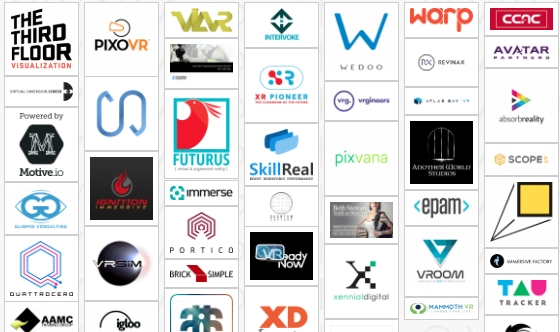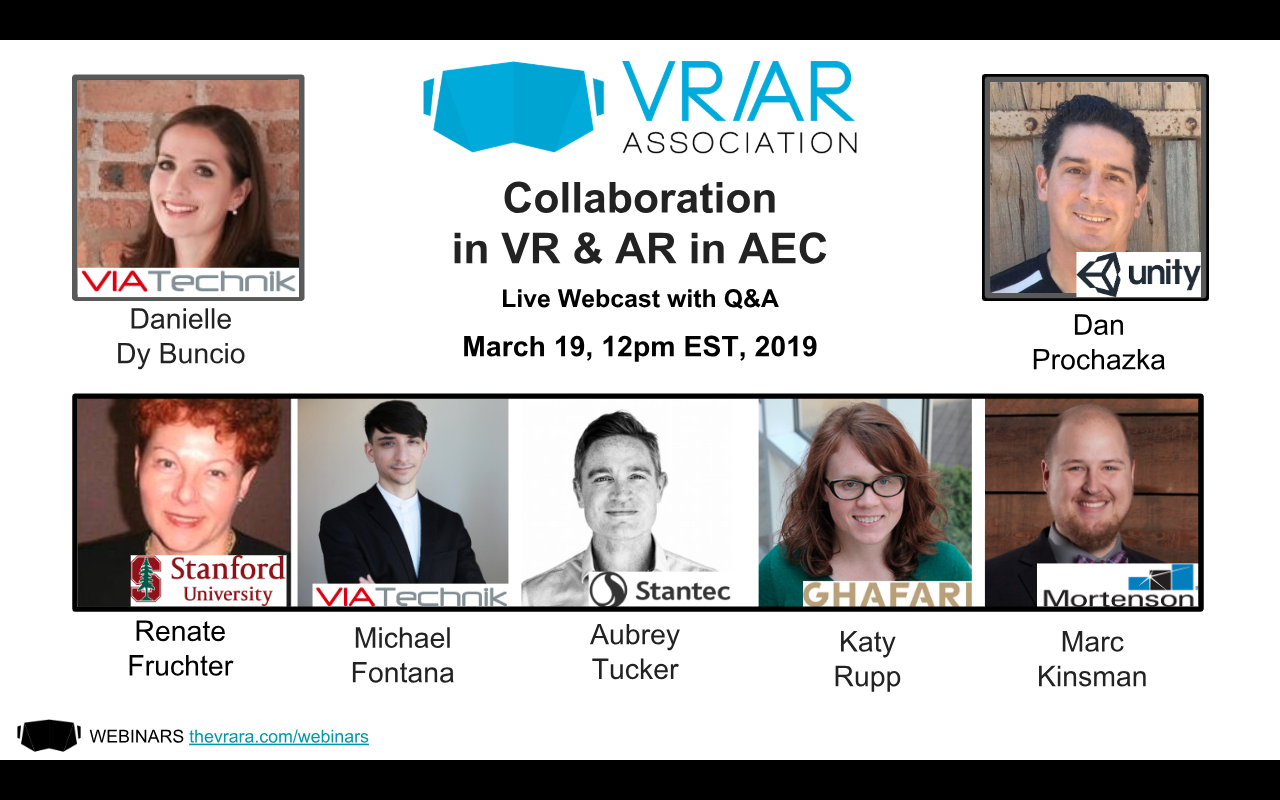Participate in our VRARA Enterprise Summit at LiveWorx June 10th in Boston. More info here
Following our VRARA Enterprise Commiteee webinar that took place in Feb, “The ROI for VR/AR in the Enterprise,” (you can watch the recording here- scroll down to Recorded webinars), we received many questions from the live audience and have answered some of these below.
1) Combining VR and AR in the same headset or other viewing device can be very useful when demonstrating or training, since you can switch back and forth between the real world and the training material, as well as viewing both simultaneously. Is anything currently being done with this capability? The answer really depends on the headset and its capabilities. I would say that you'll start to see a lot more of this with the just-released Microsoft HoloLens 2, as well as other binocular AR glasses. I suspect that we will also increasingly see this combining of VR and AR in smartphones and on tablets as work on Apple’s ARKit 2 and Google’s ARCore continues to progress.
Next-gen headsets like the Vive Focus+ will feature inside-out viewing capabilities that will allow the user to switch from a virtual environment to a real-world (albeit augmented) view. This was showcased recently when a twitch streamer spent one week in VR, proving that one could function in both a virtual and augmented environment together.
2) We've heard mostly about use cases in virtual person-to-object and person-to-environment interactions. What do you all think of the potential use cases in virtual person-to-person interactions? The potential use cases for virtual person-to-person interactions are exciting, but for enterprises in the immediate future they probably go a little beyond what most are looking for. As an industry, we need to get the basics right first and make existing AR and VR collaborations experiences are highly performant and rock solid before we can expect all but the most well-funded and curious of enterprises to explore richer virtual person-to-person interactions more fully. But the potential of them is undeniable – and the benefits easy to quantify, from savings on travel to benefits for the planet to better and richer communications in every aspect of collaborative work.
A great use-case for the person-to-person interactions was developed by HTC and Bell Helicopter where engineers were able to interact with each other to develop and build the latest in helicopter technology. They enabled up to 16 people to be in a virtual environment to engage and interact with one another to improve processes and to allow engineers from all over the world to work together seamlessly. You can read the entire case study from HTC here.
3) It is interesting that content development is not explicitly listed as a concern for adoption of AR - does this issue affect the enterprise willingness to try the technology? I would put this down to how little many enterprises know about AR. Once enterprises move beyond an awareness of the obvious benefits of “see-what-I-see” hands-free video calling using smart glasses - and really want to start to deliver useful work instructions and other content to AR users in the field - it will become much more clear that a providing a strong content development capability is truly vital to the success of many use cases. Until an enterprise has started using AR, even in a pilot, this is not readily apparent if they don’t already know a great deal about ROI. So I would expect to see this rising in importance to enterprises quickly as they move beyond the investigation and education stage and into real pilots, trials and deployments.
4) How do we show ROI? At this stage of the market, showing ROI is about working with each enterprise customer, understanding the urgent business issues they face and helping them identify the AR use cases that could help them measurably address those business issues. The customer can then get a baseline for the business issues they want to address (ie. the before picture) and then measure the impact of implementing AR. Our customer Porsche Cars North America went through this process and, as a result, when they implemented AR to connect dealership technicians to remote experts, they were able to quantify that they had shortened service resolution times by up to 40 percent. Over time, as more customers go public with the work they are doing in each industry, we will see the process of showing ROI become much easier and more standardized as “second wave” enterprises will be able to leverage the ROI work of the companies that go before them.
5) Was content-readiness considered as a barrier to deployment? It did not come up as a specific issue in our survey, but again it is probably a realization that most enterprises probably get to once get beyond a limited collaboration use case. In talking to customers, we do know that the ability to create and deploy content easily, professionally and quickly is important – as is the ability to make most effective use of content they already have.
6) Device Management can be a challenge with IT departments that are now responsible managing and securing these devices, what are you seeing in regards to device management? Device management is definitely a concern for enterprises and one that you typically start to hear about once you move beyond a limited trial or pilot. Quite understandably, once IT departments get involved, they need to be sure that any devices to be deployed on their networks are properly secured and managed. Products such as VMware’s AirWatch have been adding capabilities for AR device management for the last several years and many existing device management market players can be expected to expand their range of AR support.
7) You mentioned Mobile AR is going to come down in cost. You mentioned $400. Can you elaborate? Absolutely. There are a number of lower-cost smartglasses that have (or are about to hit) the market recently. They include the Kickstarter-backed Vue smartglasses (with a starting price of $249), the Solos sports smartglasses for $499 and the recently-reduced North Focals at $599. The jury is still out on whether any of the low-cost AR glasses makers are offering products that will see demand (or deeper investment). North, for example, recently announced a layoff of 150 employees – prompting a suspension of investment in the company by the Canadian government. Whatever the ups and downs facing manufacturers, however, it is clear that demand will continue to drive more competitive pricing on both consumer and enterprise AR devices as key components start being produced at greater scale.
How long did it take you all to create your Motive.io authoring tool?
Our authoring tool has been a work in progress since 2010, the current version, branded as the Motive.io authoring tool has been in the works for 4 years.
The platform "comes from the gaming space", what game engine is it based upon? Unity?
Yes the platform is built to integrate with Unity.
Love this! I'm an instructional designer - is there a free trial version?
Right now, access to the authoring tool is available to clients who we’re working with on a specific project. We hope to have a demo space available for people to try in the near future.
Participate in our VRARA Enterprise Summit at LiveWorx June 10th in Boston. More info here


















